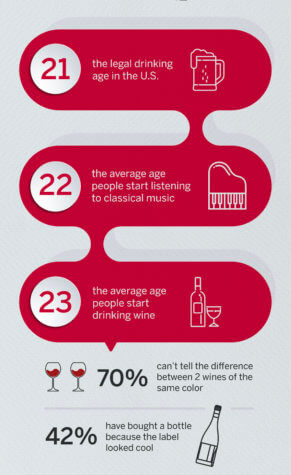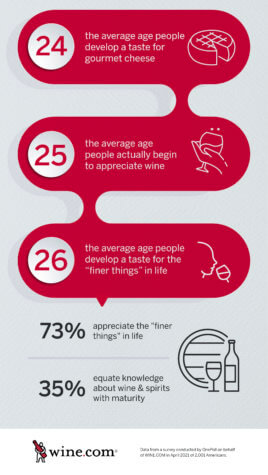NEW YORK — Get those pinkies up in the air! A new study finds three out of four Americans claim to have an appreciation for the “finer things” in life. While you may think these aristocratic tendencies develop in older age, they’re actually forming at a much earlier time than you’d expect.
According to a recent survey of 2,000 respondents over the age of 21, the average American first begins to appreciate the “finer things” when they’re just 26 years-old. Almost four out of five thinks they were even younger when their tastes became more refined.

In fact, only one in five respondents says it took them until age 30 or older.
So, what makes a person more ‘mature’?
At the top of the list, respondents cite having an opinion about the stock market (38%), being knowledgeable about different wines and spirits (35%), and investing in expensive tailored clothes (35%). One in three believe that visiting museums is something adults are expected to do, while the same number mentioned talking about current events. However, one in four don’t care about seeming mature at all.
Conducted by OnePoll on behalf of Wine.com, the data also suggests that men feel extra pressure to present themselves as sophisticated. In fact, 42 percent of men cite knowledge of wine and spirits as a marker of maturity, compared to only 30 percent of women.
The survey’s “timewine” also indicates that the average respondent starts drinking wine at age 23 and it takes them just two years before they begin to “fully appreciate” the experience. It’s not until age 24 that the typical respondent begins to actively seek out foreign wines. Coincidentally, that’s also around the same time they start developing a taste for gourmet cheese.
“It doesn’t take long to develop a love of wine,” says Addie Wallace, Director of New Business Strategy & Insights at Wine.com, in a statement. “It’s a category where the more you know, the more you want to know. You can spend a lifetime learning about it!”
The learning curve for sophistication is steep

Seven in 10 respondents admit that when they first started drinking wine, they couldn’t tell much of a difference between wine varieties of the same color. Now, however, 60 percent believe their knowledge makes them “sommelier material,” and for good reason — the average respondent has over a case of wine on hand at home.
Still, only one in five could correctly identify the name of the largest type of wine bottle (the “Nebuchadnezzar,” which is equivalent to 20 standard-sized bottles). Regardless of their wine knowledge, selecting a wine is not always a straightforward process. Nearly six in 10 respondents (58%) indicated flavor is the most important attribute when selecting a wine. Despite this, 42 percent confess they’ve purchased a bottle just because the label looked cool.
“The hardest part of shopping for wine is that you usually don’t know what it’s going to taste like. When faced with the proverbial ‘wall of wine’ at the store, the bottles look nearly identical and the labels – if you speak the language! – note only the place of origin and not the flavor,” Addie Wallace adds. “The savviest drinkers get around this by going online to read professional reviews and get expert recommendations, so that they can both shop and sip with confidence.”
